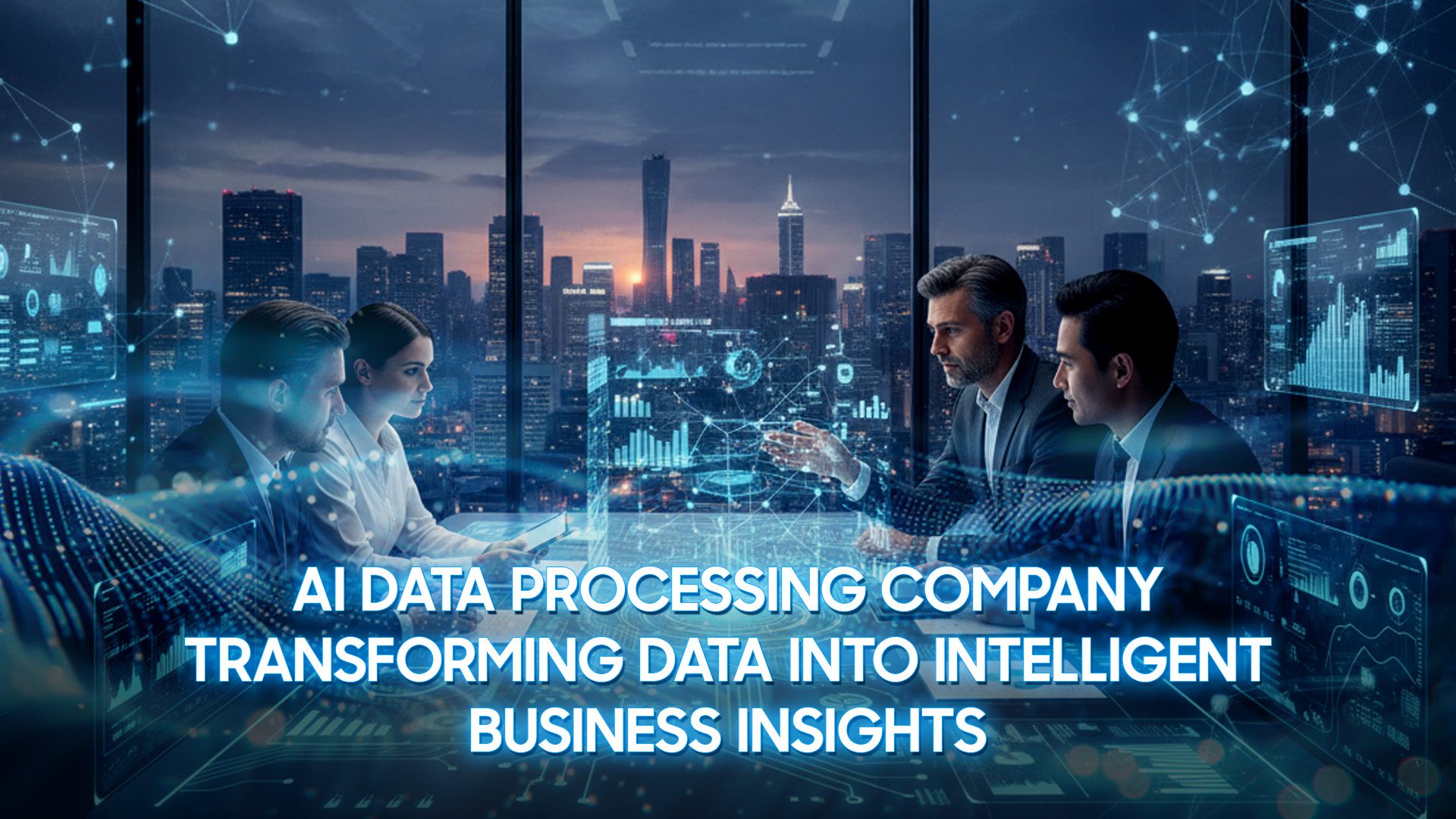To digitize and optimize workflows, many businesses are increasingly deciding to prioritize automated PDF data extraction over manual data extraction and analysis. This need arises because manual data extraction is not only time-consuming but also prone to errors. In this article, DIGI-TEXX will delve into PDF extraction technologies, how automation works, the benefits, and how to choose the right tool.
The Challenge of Extracting Data from PDFs

PDF (Portable Document Format) has become the global standard for sharing documents because of its integrity and consistency across devices. But this strength- preserving formatting -is the biggest challenge when it comes to analyzing data contained in PDF files. Data in PDF files is not created to be easily copied and pasted into spreadsheets or databases. There are two common types of PDFs today:
- Native PDFs: Created from applications such as Microsoft Word or Excel. They contain layers of digital text, which can be searched and copied. However, the data structure (such as tables, columns) is often lost when copied.
- Scanned PDFs: These are image files. These PDFs are created from scanning paper documents. To a computer, these files are no different than a photo, making manual data extraction the only option without OCR technology.
The inherent difficulty of PDF extraction is that complex layouts, tables spanning multiple pages, or unstructured data (such as those described in a contract) will lose their formatting when in PDF format, making extraction difficult. Therefore, the manual data extraction process requires employees to read each document, find relevant information, and re-enter it into another system. Therefore, the need for a reliable PDF extraction solution is very high in the current era.
What Is Automated PDF Data Extraction?

Automate PDF data extraction is the process of using software technology to automatically identify, extract, and structure data from PDF files, then convert that data into a usable format (such as Excel, CSV, JSON), and then integrate it directly into other business systems (such as ERP, CRM) for analysis.
This technology was born to completely or largely replace manual data extraction. These two methods can be clearly distinguished as follows:
- Manual Data Extraction
Process: Data entry staff will open the PDF file, read the document, identify the necessary data fields, and manually type or copy/paste it into another application such as Excel or the company’s software system.
Disadvantages: Slow speed (several minutes to hours per document), high error rate (spelling mistakes, missing data), increased personnel costs with workload, and boring, wasted time.
- Automated PDF Data Extraction
Process: Software – usually AI data capture software – takes in a PDF file. The document is then read using OCR, rules-based algorithms, and machine learning (AI/ML) models to understand the layout and context of the document. It then automatically finds and extracts data and restructures it according to standards.
Advantages: Extremely fast (a few seconds per document), high accuracy (often over 99% with trained AI models), scalable on demand, and 24/7 operation.
It can be seen that the transition from manual data extraction to automated PDF data extraction is not just an improvement in speed; it is a fundamental change in how businesses process information, freeing up human resources for other tasks that have higher value to the organization.
How Automated PDF Data Extraction Works

The automated PDF data extraction process may seem complex, but it can be broken down into core technological steps.
- Ingestion: The PDF file is uploaded to the system, which can be via email, shared folder, API, or web UI.
- Pre-processing: At this step, the image is cleaned up: automatically turning the page upside down, clarifying blurry text, removing noise (tiny black dots), and aligning crooked pages.
- OCR processing: If the PDF file is a scan, an OCR engine will analyze the image and convert it into machine-readable text.
- Document Classification: Many systems will need to process multiple types of documents (invoices, contracts, purchase orders). AI can automatically recognize documents and classify them with the corresponding extraction model.
- Data Extraction: Includes two main methods, Rule-based and AI/ML-based. Firstly, Rule-based or simply Template-based will be effective for documents with a fixed structure. The disadvantage of this method is the inefficiency when the data layout changes even a little. Meanwhile, AI/ML-based method is the standard of modern AI data capture software processes. Instead of rigid rules, AI models are trained on thousands of examples to understand the context. AI/ML-based systems will be much more flexible and can handle semi-structured documents better than Rule-based.
- Validation & Post-processing: The extracted data will be cross-checked based on logical rules. Low confidence values (when AI is uncertain) can be flagged for quick human review and ensure no data is missed.
- Data Export: Clean, validated data is exported to the desired format. This could be a simple PDF to Excel automation process, generating a JSON/XML file, or directly integrating into an ERP system (like SAP, Oracle) or a company database via an API.
Benefits of Automating PDF Data Extraction
Switching from manual data extraction to automated PDF data extraction offers a number of benefits that businesses and organizations can take advantage of.
Save time
Tasks that used to take hours or even days to complete can now be completed in minutes with AI data capture software. Applying this process will free up human resources from repetitive data entry tasks, allowing them to spend more time analyzing data, or finding insights from extracted data to bring higher value to the organization.
High accuracy

Errors are inevitable when performing repetitive and boring tasks such as manual data extraction. Fatigue and loss of concentration can lead to typos, incorrect numbers, or missing important data. A small error in the invoice amount or contract number can have serious financial consequences. AI-based automated PDF data extraction systems have very high accuracy rates, often exceeding 99%, and businesses can rest assured with the data output after the process.
Maybe You want to Read: Top 10 Data Cleansing Companies for Businesses in 2025
Optimal cost
The cost of manual data extraction includes the cost of hiring, training, and most importantly, the cost of fixing errors. Fixing a data error (e.g., overpaying a supplier) is much more expensive than getting it right the first time. By automating PDF data extraction, businesses significantly reduce their direct labor costs for data entry, as the cost of AI data capture software is much lower than the cost of maintaining a large manual data entry team.
Scalability

What happens when your business grows rapidly and the number of invoices doubles in a month? With manual data extraction, you have to rush to hire and train more staff—a process that is expensive and unsustainable. With automated PDF data extraction, scaling is simple. The system can process 100 documents or 100,000 documents with almost the same speed and efficiency.
Flexible integration
The extracted data is only truly valuable when it is connected to the right platform. Modern AI data capture software solutions are designed to integrate seamlessly through APIs, data can be pushed directly into Accounting systems (QuickBooks, Xero), ERP (SAP, Oracle), CRM (Salesforce), or any internal database.
How to Choose the Right PDF Data Extraction Software

There are many different automated PDF data extraction tools on the market. However, not all solutions are sufficient to meet the needs of your business. Choosing the right AI data capture software depends on the specific requirements of your business. Here are important factors to consider:
- Document type and complexity: Does your company need to process structured forms (like leave applications) or semi-structured documents (like invoices from hundreds of different suppliers with different layouts)? Or unstructured documents (like legal contracts)? Depending on your needs, you can find the right AI/ML software.
- OCR capabilities: The quality of the OCR technology is a deciding factor. If the software cannot accurately read text from low-quality scans or blurry images, the AI analysis behind it will be useless.
- Validation: No system is 100% perfect. An important feature is the Human-in-the-Loop interface – when the AI is unsure about a data field (e.g. low confidence), the model should flag it and give the user a quick confirmation or correction. This interface should be intuitive and efficient.
- Integration options: The software should be able to integrate with the business’s existing technology ecosystem. Check if it offers APIs or pre-built connectors for popular ERP/CRM systems.
- Scalability and pricing model: Can the system handle the volume of documents? What is the pricing model (per page, per document, per user, or per usage)? Ensure that the cost is consistent with the initial value and budget to avoid unreasonable cost overruns.
- Support and expertise: For highly specialized projects, you may not only buy software but also services. Consider large vendors who not only provide technology but also have deep BPO expertise. They can help set up, train AI models and manage the entire data extraction process.
Conclusion
Data extraction from PDF is a major bottleneck in the digital age when too many businesses are still struggling. The traditional manual data extraction process is no longer suitable for the speed of modern business – it is slow, expensive and risky. By leveraging the power of AI data capture software, organizations can transform static PDF documents into valuable, structured data assets.
If you are still wondering and want to get advice on this service. Contact the DIGI-TEXX team today to find out how our services can help your business automate PDF data extraction and unlock the full potential of your data.
>>> Read more: What Is Automated Data Extraction? Guide, Benefits & Tools


